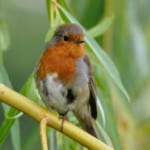Last updated on February 12th, 2022
Our site is reader supported, this means we may earn a small commission from Amazon and other affiliates when you buy through links on our site.
How and when to prune clematis for the best show
Clematis is a climbing plant that blossoms to create breath-taking scenery in the garden. The clematis plant has many, many variations, so it is possible to see many different colours, in many different shapes and sizes, from very large traditional flowers like that on Clematis multi Blue to small nodding yellow bellflowers often associated with early flowering varieties such as Bill Mackenzie. Many people are attracted to these plants because of their beauty and ability to survive through the seasons. For a beautiful clematis plant to prosper regular, but more importantly, correct pruning is necessary.
There are various reasons why pruning is important. First, if the stems are left to run their own course, you will be left with decrepit stems. Decrepit stems, in turn, reduce the number of flowers that are to bloom. Secondly, pruning reduces the weight on the supporting structure and this ensures that the climbers don’t come crashing down due to excess weight. With the correct pruning, some varieties of clematis are able to support healthy stems and become capable of blooming through the summer and some will even flower early spring and again later in the season.
Quickstart pruning guide (detailed guide further down)
- Early flowering clematis (usually in group 1) flower on the previous year’s growth and only need a light pruning after flowering.
- These large-flowered clematises usually flower late spring/early summer on the new growth that emerges from previous years’ growth and again in late summer on the tips of the current year’s growth. Prune clematis from group 2 in spring before they begin to actively grow, and again in early summer after the first flush of flowers. In general, only a light pruning is needed after flowering has finished.
- Group 3 is the easiest of clematis to prune because they simply need pruning to just above ground level in early spring to remove all the previous year’s growth. These flower summer and into autumn.
Remember if you know the name of your clematis but are unsure what pruning group it falls into, a quick google search will find the pruning group it belongs to.
Detailed pruning guide
The secret to efficient clematis pruning is to do it by the appointed flowering time. There are three main pruning groups:
Group 1 Pruning
This group consists of the clematis that bloom early, usually winter or early spring. These early bloomers are the ones that produce blooms on the previous season’s shoots so only light pruning is required. It is essential to prune these early bloomers after they have flowered in order to reduce the damage that may be caused by frost.
Most group 1 varieties, for example, clematis alpina and the clematis macropetala need minimal pruning because they don’t grow as vigorously and can just be pruned to keep them within the available growing space, which again, is done in early the spring after flowering. Young plants (around a year or two old) can be pruned to a good pair of buds about 8-12 inches above ground level to encourage bushier plants in the early stages. Once fully established, light pruning to keep them under control is perfect.
Group 2 pruning
The large-flowered clematis rule this group. These plants flower in early to mid-summer and are usually a product of the previous season’s short shoots. This group needs pruning finesse compared to the other groups. It is recommended to prune the large-flowered clematis before growth starts in late winter/early spring. The aim is to thin out and detangle present stems to provide more room for growth.
When the first flowers start fading out in early summer, you are to prune again. You want to shorten the stems that produced the first flowers. This is to encourage new growth. Alternatively, you can prune the plants back severely in alternating years to control an overgrown clematis.
Some of the species in this group include clematis Florida, The President, Jackmanii Alba, Burma star, General Sikorski, Vyvyan Pennell and the Bees Jubilee, amongst others.
Group 3 pruning
These are the summer and autumn bloomers and they flower on the current years’ growth and produce an amazing long-lasting display. They are by far the easiest group to prune. The best time to prune this group is in spring before they start actively growing and the worst of the winter weather is over. This group (that also includes herbaceous clematis) can be cut back to a strong pair of buds around 20cm to 30cm above ground level. This removes all the years’ previous growth and provides enough room for new growth. Species that belong to this group include clematis x durandii, the clematis orientalis, the clematis terniflora, and clematises Gipsy Queen, Lady Betty Balfour, Ville de Lyon and heracleifolia, amongst others.
If you are not sure as to the species of the clematis and when to prune, it is preferable you do nothing until you see when it flowers and this will give you an idea of the type of clematis. Once you know the variety you’re dealing with, you can prune accordingly depending on the time the clematis blooms.
If you already know the variety of clematis you have then a quick search on google with ‘pruning group’ after the name should help you determine the pruning group because most online nurseries will state the pruning group of the clematis they sell.


